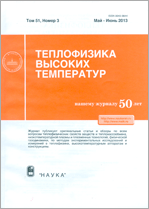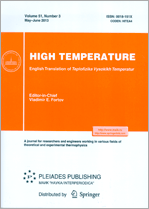|
|
Teplofizika vysokikh temperatur, 2003, Volume 41, Issue 1, Pages 57–64
(Mi tvt1626)
|
 |
|
 |
This article is cited in 1 scientific paper (total in 1 paper)
Heat and Mass Transfer and Physical Gasdynamics
Analysis of three-dimensional turbulent flow in an $S$-shaped rectangular channel
A. V. Garbaruk, M. Kh. Strelets, M. L. Shur
Saint-Petersburg State Technical University
Abstract:
Three-dimensional Reynolds equations are used to calculate a turbulent flow in an $S$-shaped rectangular channel, which was experimentally investigated by Bruns et al. [1]. It is the main objective of these calculations to estimate the accuracy provided by the most popular linear models of turbulent viscosity in application to complex three-dimensional flows. In particular, two models of this type are treated, namely, the Menter model [2] and the Spalart–Allmaras model [3]. In addition, in order to estimate the possibility of improving the accuracy of simulation owing to the inclusion of the effect of curvature of the stream lines and of anisotropy of the Reynolds stress tensor, calculations are also performed using the appropriate modifications of the Spalart–Allmaras model [3], as suggested in [4, 5]. It is demonstrated that all of the treated models produce similar results, qualitatively correctly describe the experimentally observed tendencies, and, by and large, provide for an adequate qualitative agreement between the prediction and experimental data over the averaged characteristics of flow. Some differences are observed only downstream of the inflection point of the $S$-shaped walls, where a velocity profile with two-way downwash is realized. In calculating the Reynolds stresses, the nonlinear model of [5] is clearly advantageous over other models.
Received: 13.06.2002
Citation:
A. V. Garbaruk, M. Kh. Strelets, M. L. Shur, “Analysis of three-dimensional turbulent flow in an $S$-shaped rectangular channel”, TVT, 41:1 (2003), 57–64; High Temperature, 41:1 (2003), 49–56
Linking options:
https://www.mathnet.ru/eng/tvt1626 https://www.mathnet.ru/eng/tvt/v41/i1/p57
|


| Statistics & downloads: |
| Abstract page: | 182 | | Full-text PDF : | 100 |
|





 Contact us:
Contact us: Terms of Use
Terms of Use
 Registration to the website
Registration to the website Logotypes
Logotypes








 Citation in format
Citation in format 
